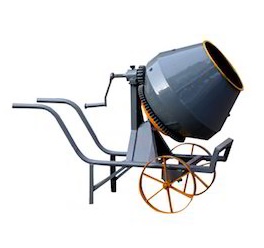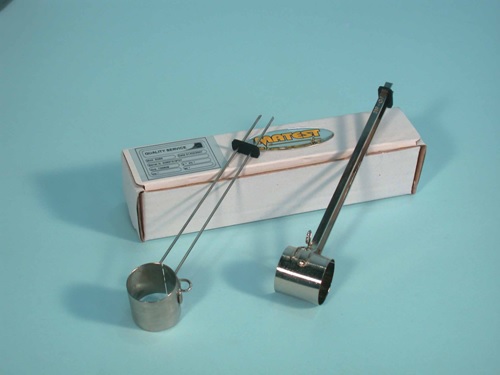
Vee Bee Consistometer
The testing machine is used for workability as well as consistency of fresh concrete. A slump cone and a graduated rod supplied with the instrument helps the operator to find out slump values and Vibration Table with container and acrylic disc is used to find out workability of concrete expressed in Vee Bee degrees, which is defined as the time in seconds to complete required vibrating at which the fresh concrete flows out sufficiently to come in contract of the entire face of acrylic disc.
The equipment consists of : A Vibrating Table size 380 mm long and 260 mm wide resting upon elastic support at a height of about 305 mm above the floor, complete with star /slop Switch, Chord and Plug. A holder is fixed to the base into which a swivel arm is telescoped with funnel and guide sleeve. The swivel arm is also detachable form the Vibrating Table. A graduated rod is fixed on a swivel arm and at its end a plastic disc is screwed. The divisions of scale on the rod record the slump of the concrete in millimeters. Supplied complete with a sheet metal container with lifting handles which can easily be fixed to the Vibrating Table. A slump cone open at both ends with lifting handles and a Tamping rod of size 16 mm diameter and 600 mm long rounded at one end.

Test Sieves - Brass

Aggregate Crushing value Apparatus
Aggregate crushing value test on coarse aggregates gives a relative measure of the resistance of an aggregate crushing under gradually applied compressive load. Crushing value of aggregates indicates its strength. Lower crushing value is recommended for roads and pavements as it indicates a lower crushed fraction under load and would give a longer service life and a more economical performance.
The aggregates used in roads and pavement construction must be strong enough to withstand crushing under roller and traffic.

Concrete Mixer
Mixer blade has low speed of 140/5 rpm and medium speed of 285/10 rpm,while it also has a planetary
movement of 62/5 rpm in low rangeand planetary movement of 125/10rpm in medium range.
Stainless steel bowl fitted with handle,fitted with lid made of non-absorbingmaterial and not attacked by cement,masonry cement, cement pozzolans
mixture or lime pozzolans mixture.
- The scraper consists of semi rigidrubber blade attached to a handleabout 150 mm long. The blade about
- 75 mm long, 50 mm wide and taperedto a thin edge.
- Suitable for operation on 230 Volts,single phase

Laboratory Cement Autoclave
Laboratory Cement Autoclave With Stainless Steel Chamber is suitable for conducting accelerated soundness test on cement or the autoclave expansion test requiring constant steam pressure with the correspondent constant pressure. It is consists of a stainless steel cylinder with a welded heat insulated over, mounted on a sturdy supporting frame, enclosed in a heat insulated metal housing, attractively finished. The attached control unit encloses sensitive pressure regulator and pressure gauge, power switches and pilot lights for controlling the electric heating units inside Chamber Dimension-15 cm diameter x 40.5 cm height suitable for operation on 230 v, 50 Hz, Single phase, A.C. supply. Supplied complete with test bar holder Special rack to hold specimens above the water level in the autoclave and in a vertical position to expose them in the same manner

Le-ChatelierMould Apparatus
Made from a brass spring tensioned split cylinder having internal diameter of 30 by 30 mm high, with two pointers 150 mm long. Chromed finishing.
Used to determine the cement expansion (soundness) either in cold or boiling water.
The apparatus consist of a small split cylinder of spring brass or other non-corrodible metal of 0.5 mm thickness forming a mould 30 mm internal diameter and 30 mm high. On either side of the split, two indicators are brazed suitably with pointed ends made of 2 mm diameter brass wire in such a way that the distance of these ends to the centre of the cylinder is 165 mm. The split cylinder will be kept between two glass plates.
